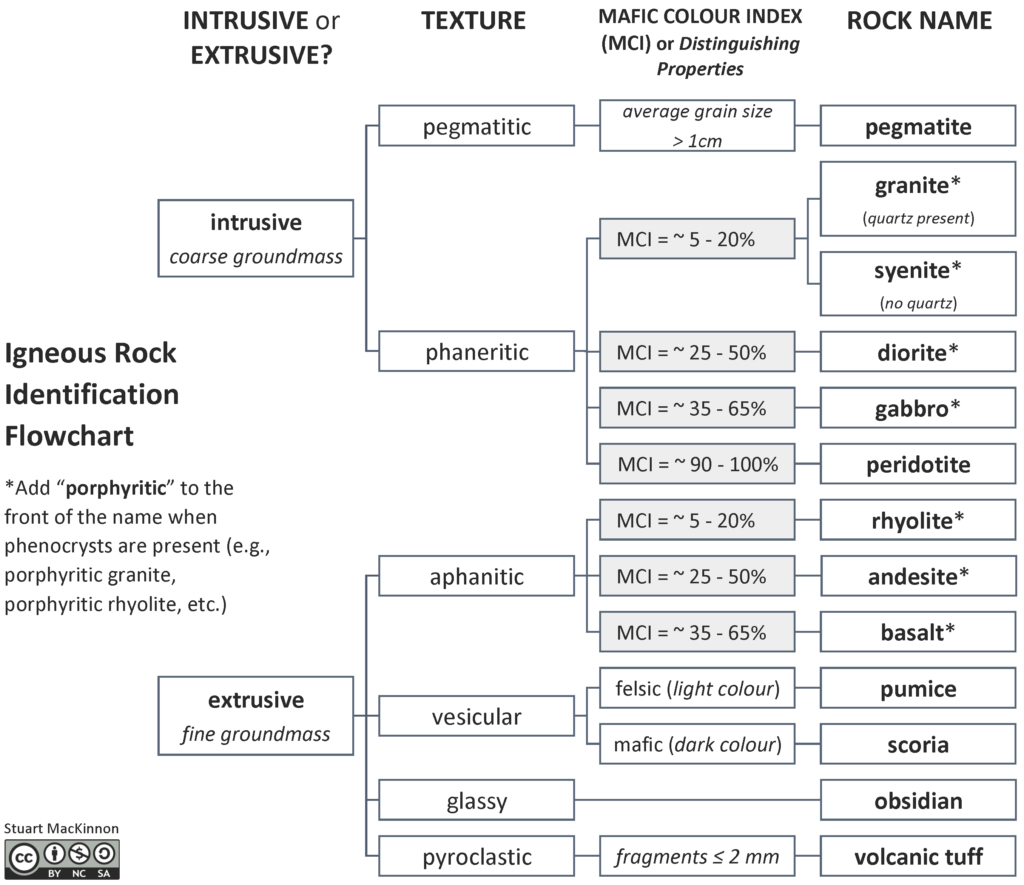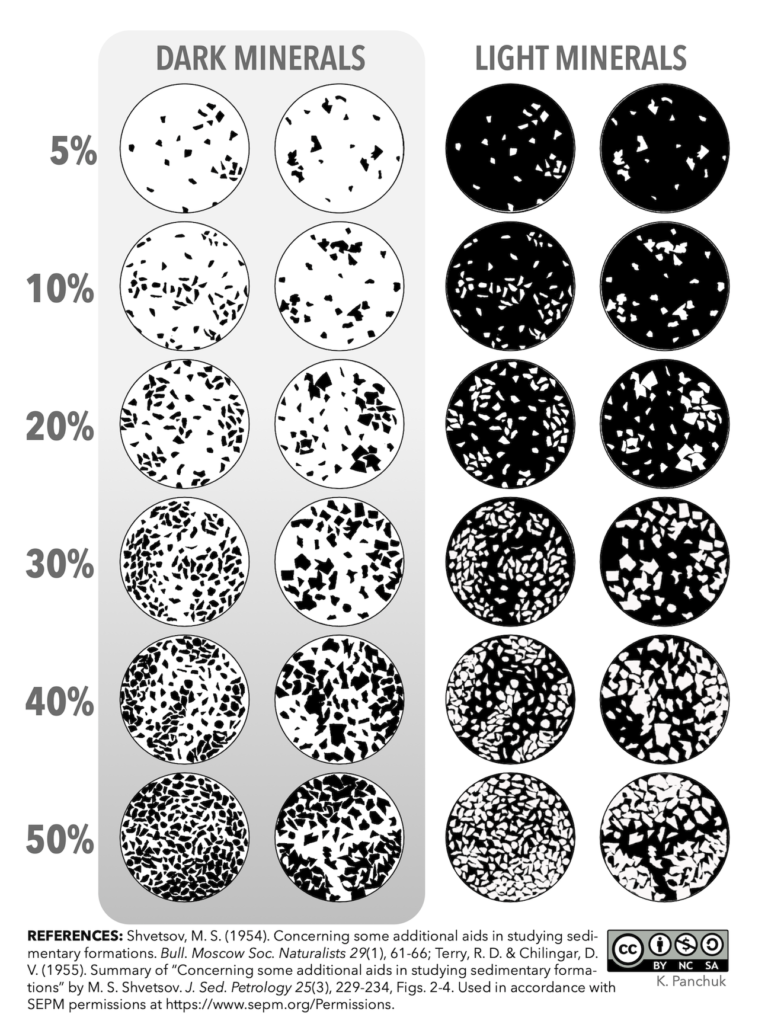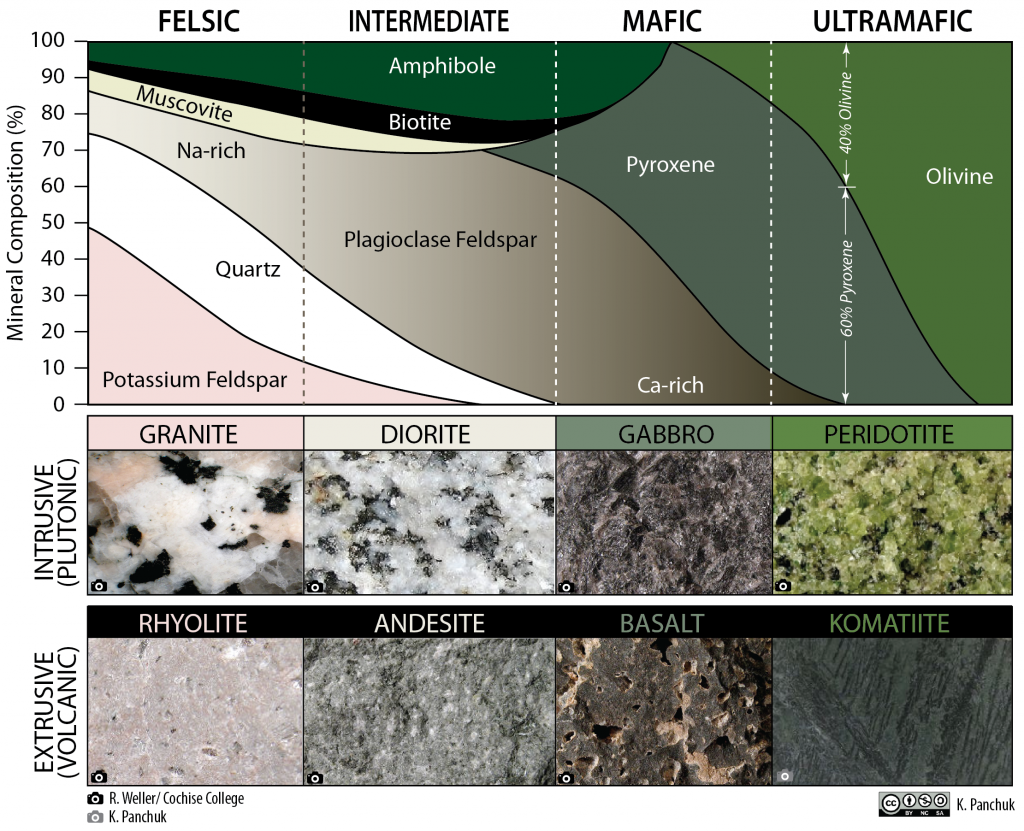Chapter 3. Igneous Rocks
Reference Tools for Igneous Rocks
What’s in This Toolbox?
Igneous Rock Identification Flowchart
Use this flowchart to guide you through deciding on a rock name. Note that this chart may include some rocks that are not in your kit.
Go to the Igneous Rock ID Flowchart.
Mafic Colour Index (MCI) Chart
Use this diagram to help you estimate the percent of mafic (dark grey, black, and/or green) minerals.
Compositional Classification Diagram
A colour diagram showing the mineral breakdown of common igneous rocks, including photographs of the common types of rocks in each of the compositional categories (i.e., ultramafic, mafic, intermediate, felsic). Use this diagram to remind yourself about the different colours of igneous rocks, and the difference between phaneritic (coarse-grained) and aphanitic (fine-grained) textures.
Note: This diagram is from the textbook.
Go to the Compositional Classification Diagram.
Igneous Rock Identification Flowchart

Mafic Colour Index (MCI) Chart
This diagram shows the percent of each circle covered by specs that represent minerals. Dark minerals in a lighter background are shown on the left, and light minerals in a darker background are shown on the right. Note that the Light Minerals column is the negative of the Dark Minerals column, meaning that a coverage of 30% light minerals has 70% coverage of dark minerals.

Compositional Classification Diagram


